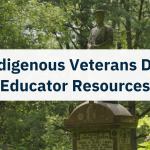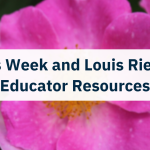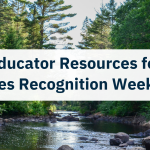Orange Shirt Day: “It fits in the past, the present, as well as the future”
Since Phyllis Webstad shared her story as a residential school Survivor in 2013, Orange Shirt Day has become recognized widely across Canada. In eight short years, the words “Every Child Matters” have touched people young and old. Phyllis Webstad describes Orange Shirt Day as a “day of reconciliation.” She says the idea that all children matter “fits in the past, the present, as well as the future.”
Learning and Taking Action
For some, Orange Shirt Day is their first time learning about residential school history through Indigenous people’s voices and experiences. For others, it is a day to take action by participating in campaigns or joining others from across the country for the National Centre for Truth and Reconciliation’s virtual gathering. Residential school Survivor Eddy Charlie (Quw’utsun) believes Orange Shirt Day holds possibilities for the future: “Orange shirt day is this one opportunity when everybody can come together to reclaim their identity and their lost traditions.”
Honouring Survivors
How you recognize Orange Shirt Day may depend on where you are and who your learners are. In some communities, learners have a strong understanding of historical trauma and how it impacts their families and community. They may wish to honour residential school Survivors through experiences that generate a sense of identity, foster community connectedness, and reclaim traditions.
Orange Shirt Day Lesson Plan
There are many starting points for a lesson with these aims. Educators can connect residential school Survivors’ stories to learners’ lived experiences today. Below is an example lesson educators can deliver around Orange Shirt Day. The lesson asks learners to share and acknowledge one another’s experiences through personal cultural materials. Learners explore how a cultural item can represent a person’s identity.
Before
Find out how your school will recognize Orange Shirt Day. Decide if this lesson should become before or after the Orange Shirt Day gatherings at your school. Choose an orange t-shirt that will anchor a class discussion and reflection on cultural materials and their meaning.
Hook: Show the orange t-shirt to learners and ask them to share or write down their first thought when they see an orange t-shirt. Then ask them what an orange t-shirt means to them or might mean to other people on Orange Shirt Day.
During
Building conceptual understanding: With the class, explain or define the concept of cultural materials, something made by people, often with specific cultural meaning. Make connections between Phyllis Webstad’s story and the orange t-shirt. The orange t-shirt is a cultural item that helps others remember Phyllis’s story. Explain how the shirt has come to symbolize many stories shared by residential school Survivors across nations.
You may wish to show the class photos of cultural materials from around the school or community as examples. These could range from a learners’ or community members’ art to athletic medals or trophies. The common thread is that the cultural materials have a special meaning to the community or school culture.
Hearing their stories: Invite learners to choose a personal cultural item that they feel comfortable sharing with their peers. Learners may spend a couple of days choosing an item and writing down the description and story behind it. Learners can organize their work around these five questions:
- What is your cultural item?
- Where does it come from?
- What is the story behind it?
- Why does it mean a lot to you?
- What do you think the artifact says about who you are?
Preparing a Sharing Circle
Let learners know they will share their cultural materials in a sharing circle with the rest of the class. You will invite a local Elder or residential school Survivor to share their own cultural materials. If your guest has a skill like beading, sewing, or crafting traditional items, consider asking them to bring an item and share how they learned their skills. Ask what their process is and how the items they create reflect part of their identity.
Note: Make arrangements with this guest in advance. Please make sure they are comfortable sharing a personal cultural item with learners and explaining how it represents their identity.
Sharing Circle: Facilitate a circle that encourages learners to share their cultural materials. It can be a powerful experience to hear an Elder or residential school Survivor share a story about cultural materials and identity. You may wish to follow Protocols or guidelines to ensure that everyone listens and participates respectfully.
After
Arrange for learners to thank the guest appropriately. Provide time for learners to reflect on similarities and differences between their story and the Elder or residential school Survivor’s story. What did they learn about themselves and their community by listening to everyone’s stories and experiences?
How do you recognize Orange Shirt Day in your class? What themes do you focus on, and what discussions do you have with learners? Share your teaching experiences on this important topic.







